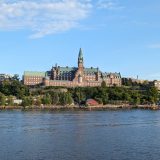
Dr. Matt Pritchard to speak on new methods in geodetic imaging
April 11, 2013
 It is our pleasure to invite you to a seminar on new methods in geodetic imaging and some of their impacts on measuring the size and shape of the Earth. Next Wednesday, come listen in as Dr. Matt Pritchard, Associate Professor at Cornell University, will be discussing the limitations of GPS technology and the benefits geodetic imaging can provide:
It is our pleasure to invite you to a seminar on new methods in geodetic imaging and some of their impacts on measuring the size and shape of the Earth. Next Wednesday, come listen in as Dr. Matt Pritchard, Associate Professor at Cornell University, will be discussing the limitations of GPS technology and the benefits geodetic imaging can provide:
“Towards a pixel-by-pixel view of North America’s changing surface using geodetic imaging”
w/ Dr. Matt Pritchard, Associate Professor, Cornell University
Wednesday, April 17, 2013
2:15 – 3:15 pm
Hashinger Science Center 215
For centuries, measurement of the shape of the Earth (called the science of geodesy) was necessarily time consuming. Even with new technologies like the GPS, vast portions of the Earth remain infrequently monitored for movement. Recently, a new form of geodesy has rapidly developed whereby image pairs can be compared to infer movements of the Earth’s surface. Called geodetic imaging, the synoptic aircraft or satellite views allow large regions to be surveyed densely without any human setting foot in the area.
Imaging geodesy encompasses several different types of methods including Interferometric Synthetic Aperture Radar (InSAR) as well as the automated comparison of SAR and optical images via pixel tracking. InSAR can image sub-centimeter deformation of the Earth’s surface every 1-20 meters over areas spanning hundreds to thousands of kilometers.
Pixel tracking is a very complementary tool to InSAR– although the sensitivity to deformation is less and the horizontal spacing is coarser, it can be applied to both radar and optical images and often works when InSAR does not. InSAR has allowed vast areas of the Earth’s surface to be monitored frequently for deformation for the first time and this presentation will highlight some of the discoveries in North America and elsewhere, selected with input from the host institution.
Possible topics include earthquakes/tectonics, magmatic processes in the Basin & Range and globally, landslides, glaciers (especially in Alaska), groundwater, changes in vegetation, and human-induced ground deformation.

